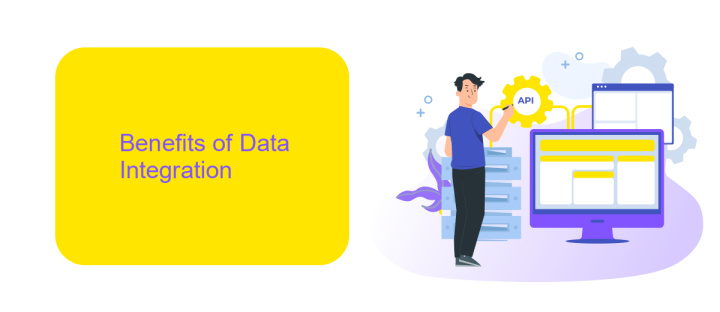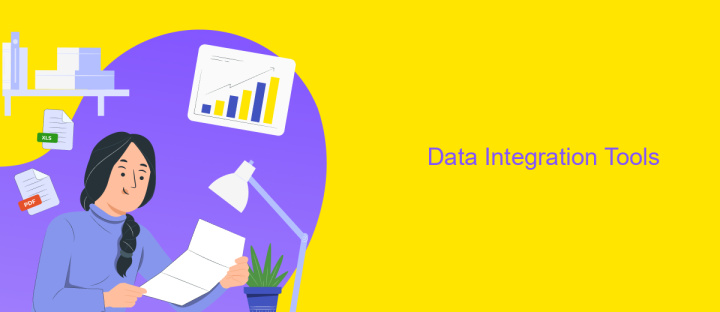What's Data Integration
Data integration is a crucial process in the modern data-driven world, enabling organizations to combine data from diverse sources into a unified view. This process not only enhances data accessibility and accuracy but also supports informed decision-making and strategic planning. In this article, we will explore the fundamental concepts, methods, and benefits of data integration, illustrating its importance in today's business landscape.
What is Data Integration?
Data integration is the process of combining data from different sources to provide a unified view. It involves collecting, transforming, and consolidating data to make it more accessible and useful for analysis and decision-making. This process is crucial for businesses that rely on data-driven insights to stay competitive and efficient.
- Data Extraction: Retrieving data from various sources.
- Data Transformation: Converting data into a consistent format.
- Data Loading: Storing the transformed data in a target system.
- Data Cleansing: Removing errors and inconsistencies.
- Data Mapping: Aligning data from different sources to a common schema.
Effective data integration enables organizations to harness the full potential of their data. It ensures data accuracy, enhances data quality, and provides a comprehensive view of business operations. By integrating data, companies can make more informed decisions, improve operational efficiency, and gain a competitive edge in the market.
Benefits of Data Integration

Data integration offers numerous benefits that can significantly enhance business operations. By consolidating data from various sources into a unified system, organizations can achieve a more comprehensive view of their operations. This holistic perspective enables better decision-making, as it provides insights that are not possible when data is siloed. Additionally, data integration improves data quality by eliminating redundancies and inconsistencies, ensuring that the information used for analysis and reporting is accurate and reliable.
Moreover, data integration streamlines processes and increases efficiency by automating data flows between different systems. This reduces the need for manual data entry and minimizes the risk of human error. Tools like ApiX-Drive facilitate seamless data integration by offering easy-to-use interfaces and robust connectivity options. ApiX-Drive allows businesses to quickly set up integrations without the need for extensive technical knowledge, saving time and resources. Overall, data integration is essential for businesses looking to optimize their operations and stay competitive in today's data-driven landscape.
Challenges of Data Integration

Data integration is a complex process that involves combining data from different sources to provide a unified view. Despite its benefits, there are several challenges that organizations face when integrating data. These challenges can significantly impact the efficiency and effectiveness of data integration efforts.
- Data Quality: Inconsistent, incomplete, or erroneous data can lead to inaccurate insights and poor decision-making.
- Data Silos: Different departments often store data in isolated systems, making it difficult to access and integrate.
- Scalability: As the volume of data grows, the integration process becomes more complex and resource-intensive.
- Security and Compliance: Ensuring that data integration processes comply with regulations and protect sensitive information is crucial.
- Compatibility: Integrating data from various formats, databases, and systems can pose significant technical challenges.
Addressing these challenges requires a strategic approach that includes robust data governance, advanced integration tools, and collaboration across departments. By overcoming these obstacles, organizations can achieve seamless data integration, leading to better analytics, improved decision-making, and enhanced operational efficiency.
Data Integration Tools

Data integration tools are essential for combining data from different sources into a unified view, enabling organizations to make informed decisions. These tools help streamline data flows and ensure data consistency, quality, and accessibility across various platforms.
Modern data integration tools come with a wide range of features, including data transformation, data cleansing, and real-time data processing. They also support various data formats and protocols, making it easier to integrate data from disparate systems.
- ETL (Extract, Transform, Load) Tools
- Data Virtualization Tools
- Cloud-based Integration Platforms
- API Management Tools
- Data Replication Tools
Choosing the right data integration tool depends on the specific needs of your organization, such as the volume of data, the complexity of data transformations, and the required level of real-time processing. By leveraging these tools, businesses can achieve a more cohesive and efficient data management strategy.
Best Practices for Data Integration
Effective data integration requires meticulous planning and execution. Start by clearly defining your objectives and the specific data sources that need to be integrated. Ensure you have a comprehensive understanding of the data formats, structures, and any potential compatibility issues. Establish data governance policies to maintain data quality and consistency across all integrated systems. Regularly monitor and audit the data integration processes to identify and rectify any discrepancies or errors promptly.
Utilizing robust tools and platforms can significantly streamline the data integration process. For example, ApiX-Drive offers a versatile solution for automating data transfers between various applications and services. It supports a wide range of integrations, making it easier to connect disparate systems without extensive coding. Additionally, ApiX-Drive provides real-time data synchronization, ensuring that your integrated data is always up-to-date. By leveraging such tools, you can enhance efficiency, reduce manual intervention, and minimize the risk of data loss or corruption.
FAQ
What is data integration?
Why is data integration important?
What are common challenges in data integration?
What are some methods of data integration?
How can I automate data integration processes?
Apix-Drive is a simple and efficient system connector that will help you automate routine tasks and optimize business processes. You can save time and money, direct these resources to more important purposes. Test ApiX-Drive and make sure that this tool will relieve your employees and after 5 minutes of settings your business will start working faster.

